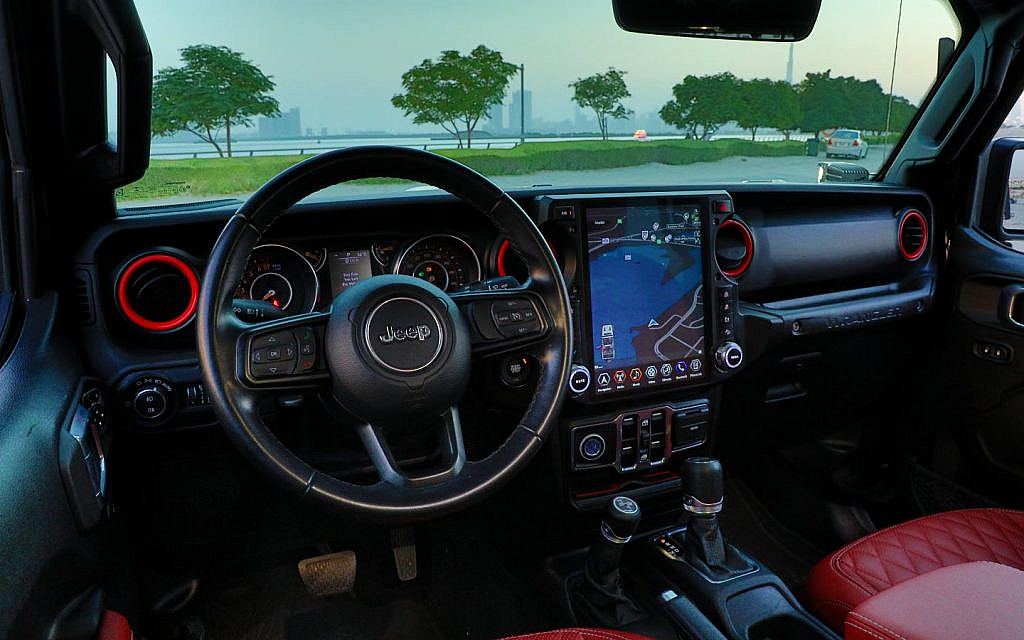Evolution of Infotainment Systems
Infotainment systems have become another integral feature in new vehicles that enhance the driving experience. Infotainment is a fusion of ‘information’ and ‘entertainment,’ displaying vehicle information and smartphone’s or any other connected device’s data on the screen.
The advanced infotainment systems we see nowadays are a result of the progressive development of earlier technologies. Here’s a timeline of the evolution of infotainment systems from basic AM radios to AI-driven navigation hubs.
History of Car Infotainment Systems

The infotainment systems in cars today have undergone significant transformation due to constant technological improvements. Advancements like satellite radio and digital streaming platforms played a huge role in transforming infotainment systems.
Today, the infotainment systems by different car brands include unique features to enhance connectivity and driving experience. Here’s the history of car infotainment systems, shedding light on how these systems evolved over time.
Advent of AM Radio (1930s-1940s)
The addition of AM radios in vehicles marked the start of in-car infotainment systems. These AM radios remained the sole source of car entertainment for two decades. Furthermore, they were the stepping stone to today’s advanced and smart infotainment systems.
Initially, these radios were fitted in the car’s trunk due to their vast size. However, later, it was established that their ideal location was on the dashboard. After this in-car audio setup, automakers started exploring ways to make infotainment systems more accessible and useful.
Integration of Radio Presets (1940s-1950s)
In the 1940s, considerable advancements were made to improve the infotainment systems. Some of the notable advancements in this era included the integration of knobs and buttons to switch between channels. Users also had the option to save specific radio station presets.
Furthermore, Chrysler introduced their vehicles featuring record players. However, it did not gain the expected traction among motor enthusiasts then.
Cassette Players and In-Car Maps (1960s–1980s)
Dual-channel modern stereos were in high demand during this period. These car stereo speakers facilitated dual audio output simultaneously. Moreover, there was a shift in music storage with the debut of 8-track and compact cassette tapes.
In this era, external data storage options also came into being. These options included cassette tapes that utilised magnetic strips to store audio signals. Japan explored in-car navigation and Toyota’s 1980 Celica was launched with the first electro-gyrocator navigation system.
Introduction of Digital Audio (1990s-2000s)
The 90s welcomed compact discs (CDs) to replace cassette players. CDs garnered significant attention due to their enhanced sound quality and convenience. Furthermore, they became a standard feature in the cars produced then.
Bluetooth and Auxiliary Inputs (2000s-2010s)
The 2000s infotainment units saw considerable technological advancements. These units had screens incorporated alongside car Bluetooth and auxiliary input options. These additional options enabled features like hands-free calling and enhanced connectivity with devices.
In this decade, drivers could play music via MP3 players and USB devices, which replaced CDs. The emergence of USB made it easier to watch videos and play songs in the car’s infotainment system.
Touchscreens and Smart Features (2010s-2020s)

This decade was one of the most significant ones when it came to the evolution of in-car infotainment systems. The useful features of car infotainment units in this era included touch screens that streamlined navigation. These features also eliminated the need for physical buttons.
GPS navigation systems gained popularity in the auto sector. Moreover, new car models came with in-car Wi-Fi and other connectivity features like Android Auto and Apple CarPlay. SD card slots and Bluetooth were introduced to make storage easier.
AI Integration and Autonomous Tech (2020s-Present)
The infotainment systems today feature impressive technological enhancements. The latest innovations in vehicle infotainment systems include AI integration and built-in internet connectivity. Furthermore, the large LED screens on the infotainment unit help provide route suggestions and real-time traffic updates.
The voice-control feature allows the driver to focus on the road by giving verbal commands to the system. The innovative radars and sensors inform the driver about the car’s maintenance needs. Safety features like parking assistance, lane-keeping and collision warnings rely on the infotainment system to function effectively.
Moreover, infotainment systems have become a vital part of EVs. They display essential data like charging station locations, battery charge levels and range. This helps the driver monitor the vehicle’s performance and energy use.
FAQs
What are the main ways to control the infotainment system of a modern vehicle?
Touchscreens, physical buttons and voice commands are some of the primary ways to control an infotainment system of a modern car.
What is the function of the infotainment system?
The infotainment system of a car merges vehicle controls, media and navigation in one place to ensure a comfortable driving experience.
Can you change the infotainment system?
A car’s infotainment system can be replaced with a compatible aftermarket alternative.
The rapid technological advancements in car infotainment units reflect automakers’ commitment to enhancing the driving experience. The evolution of vehicle infotainment systems is marked by several milestones. With humble beginnings as basic AM radios, infotainment systems have become modern vehicles’ entertainment hubs.
Furthermore, if your car’s infotainment system is outdated, it might be time to get a new ride. Go through these used cars for sale in the UAE to select the one that aligns with your requirements. However, for people interested in buying a brand new ride, explore these new cars for sale in the UAE.
Keep reading the UAE’s favourite cars blog and stay connected to all the information about the latest automotive technologies.
Image Credits: Shutterstock Image Contributor – Kittyfly
Comments
Post a Comment